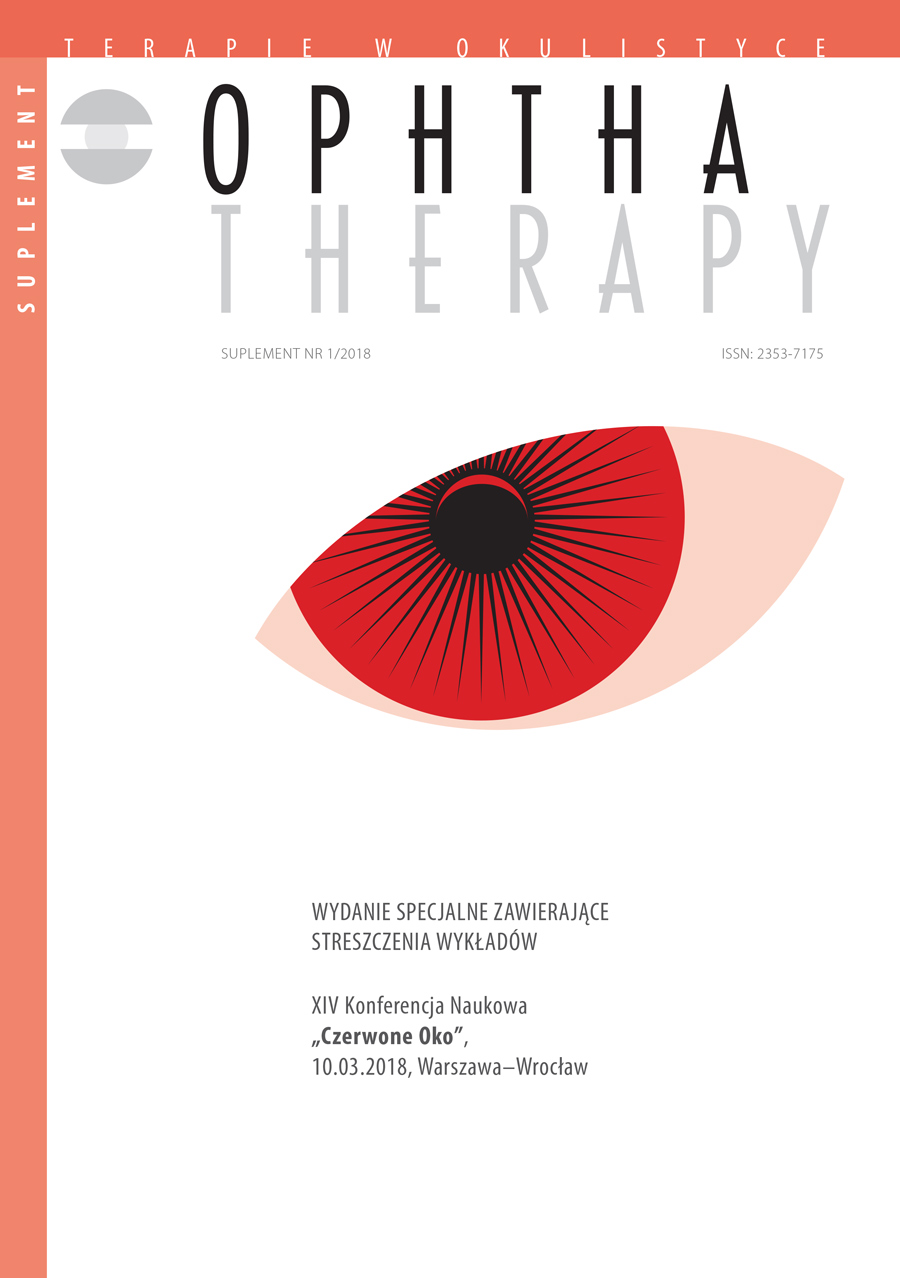Inne choroby pasożytnicze przedniego odcinka oka
##plugins.themes.bootstrap3.article.main##
Abstrakt
Turystyka egzotyczna dostarcza nam wiele radości, ale może się również wiązać z poważnymi powikłaniami ze strony narządu wzroku. Pasożyty rozwijają się w organizmie przez wiele miesięcy, a nawet lat, zanim wywołają określone objawy zakażenia. Zapalenie przedniego odcinka może się wiązać ze spożyciem zanieczyszczonego pożywienia, z ukąszeniem przez zakażonego owada lub bezpośrednim kontaktem podrażnionego oka z pasożytem. Do powikłań infestacji pasożytami ze strony przedniego odcinka oka zaliczamy: zapalenie tkanek oczodołu (niekiedy z uczuciem ciała obcego wynikającym z obecności dojrzałego osobnika), zapalenie rogówki, przekrwienie, świąd i zapalenie spojówek, obecność pasożyta pod spojówką lub w komorze przedniej, zapalenie błony naczyniowej, ropostek, krwistek oraz zaniki tęczówki. W diagnostyce różnicowej nietypowego klinicznie zapalenia przedniego odcinka należy uwzględnić zakażenie pasożytami nawet w przypadku, gdy pacjent nie przebywał w obszarach endemicznych, zakażenie pasożytem może bowiem nastąpić w wyniku kontaktu z wektorem uwolnionym po transporcie lotniczym lub morskim.
Pobrania
##plugins.themes.bootstrap3.article.details##

Utwór dostępny jest na licencji Creative Commons Uznanie autorstwa – Użycie niekomercyjne – Bez utworów zależnych 4.0 Międzynarodowe.
Copyright: © Medical Education sp. z o.o. License allowing third parties to copy and redistribute the material in any medium or format and to remix, transform, and build upon the material, provided the original work is properly cited and states its license.
Address reprint requests to: Medical Education, Marcin Kuźma (marcin.kuzma@mededu.pl)
Bibliografia
2. Das D, Ramachandra V, Islam S et al. Update on pathology of ocular parasitic disease. Indian J Ophthalmol. 2016; 64: 794-802.
3. Zagórski Z, Naumann GOH, Watson P. Choroby rogówki, twardówki i powierzchni oka. Wyd. 1. Czelej, Lublin 2008: 241-5.
4. Nimir AR, Saliem A, Aziz IA. Review article Ophthalmic Parasitosis: A Review Article. Interdiscip Perspect Infect Disease. 2012: 12.
5. Rosenblatt JE. Antiparasitic agents. Mayo Clin Proc. 1999; 74(11): 1161-75.
6. Chandra A. A Live Cysticercosis in Anterior Chamber Leading to Glaucoma Secondary to Pupilary Block. J Glaucoma. 2007; 16: 271-3.
7. Kosik-Bogacka D, Czepita D, Łanocha N. Pełzaki z rodzaju Acanthamoeba jako czynnik etiologiczny zapalenia rogówki oka. Klin Oczna. 2010: 4-6.
8. Zhang X, Sun X, Jiang C et al. A new in vivo confocal microscopy prognostic factor in Acanthamoeba keratitis. J Fr Ophtalmol. 2014; 37(2): 130-7.
9. Prost ME, Jachowicz R, Nowak JZ (ed). Kliniczna farmakologia okulistyczna. Wyd. 2. Elsevier Urban & Partner, Wrocław 2016: 194.
10. Cupp EW, Sauerbrey M, Richards F. Elimination of human onchocerciasis: history of progress and current feasibility using ivermectin (Mectizan(®)) monotherapy. Acta Trop. 2011; 120(suppl 1): 100-8.
11. Genchi C, Kramer L. Subcutaneous dirofilariosis (Dirofilaria repens): an infection spreading throughout the old world. Parasit Vectors. 2017; 10(2): 517.

